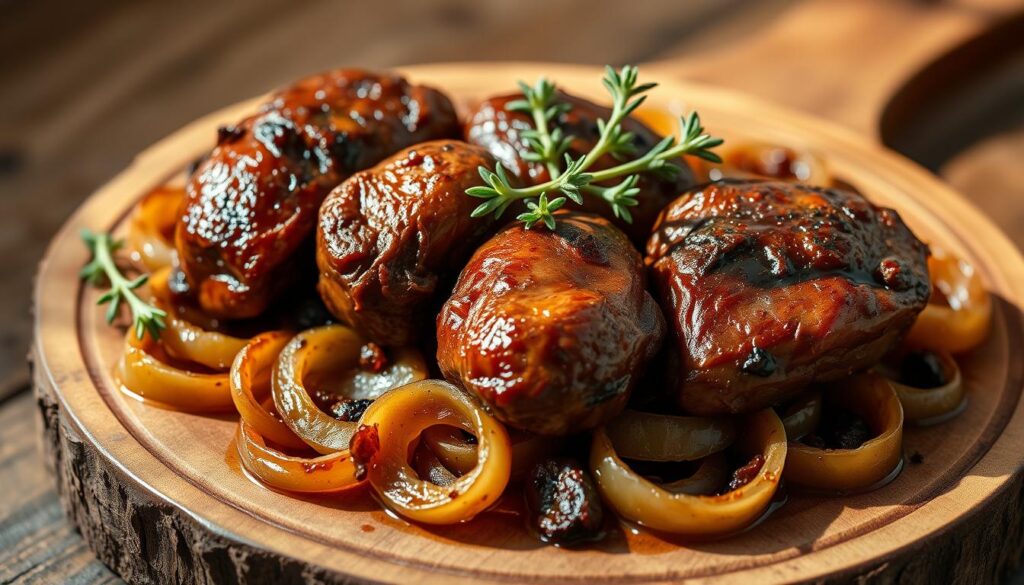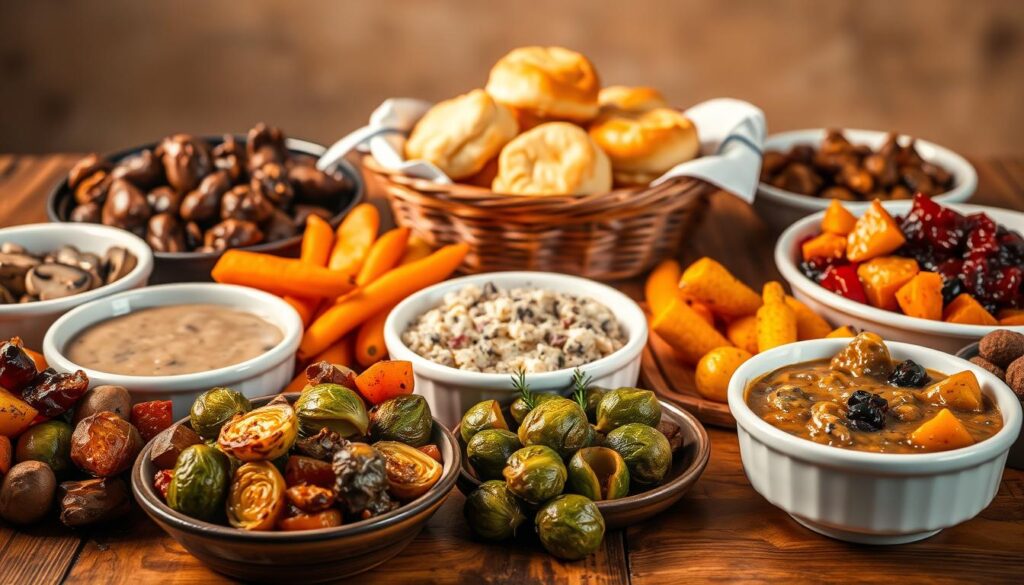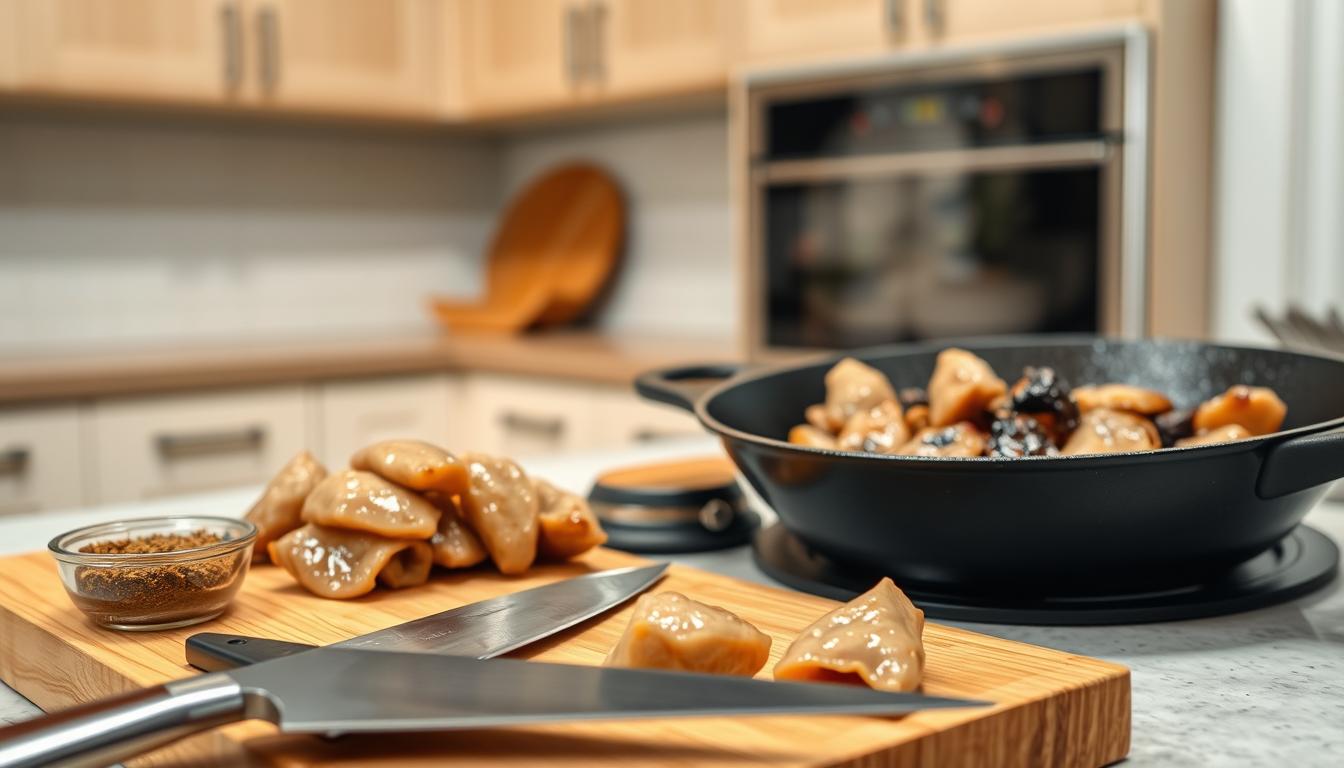How to cook chicken livers — they’re tasty, affordable, and surprisingly easy to prepare. Learning how to cook chicken livers can take your home cooking to a new level. If you’ve been hesitant to try them, this simple guide will show you how to make flavorful dishes that everyone will love.
Cooking chicken livers might look hard, but it’s not. With the right steps, you can quickly become good at making these healthy bites. Whether you’re new to cooking or have been doing it for years, learning to cook chicken livers can open up a world of tasty and healthy meals.
In this detailed guide, you’ll learn all about picking the best ingredients and cooking methods. You’ll get tips to make your chicken liver dishes tender and full of flavor. Get ready to discover how to make chicken liver dishes that will be a favorite in your kitchen.
Table of Contents
Understanding Chicken Livers: A Nutritious and Affordable Option
Chicken livers are a hidden gem in the world of nutrition. They offer a great mix of flavor and health benefits. These small, nutrient-dense organs are packed with essential vitamins and minerals. They can boost your overall wellness without costing a lot.
Chicken liver nutrition is truly impressive. These compact protein sources are loaded with critical nutrients. They support your body’s various functions. Choosing fresh chicken livers means you get an exceptional nutritional profile.
Nutritional Powerhouse
- Rich in iron – helps prevent anemia
- High in vitamin A – supports eye and immune health
- Excellent source of B vitamins – promotes energy metabolism
- Contains essential minerals like zinc and selenium
Selecting Fresh Chicken Livers
When shopping for fresh chicken livers, look for these quality indicators:
- Deep red or brownish-red color
- Smooth, moist surface without dry patches
- Minimal odor – should smell clean, not pungent
- Firm texture without soft spots
Storing Chicken Livers Safely
Proper storage is crucial for maintaining the quality of your chicken livers. Keep them refrigerated at 40°F or below. Use within 1-2 days of purchase. For longer storage, freeze them for up to 3-4 months in an airtight container.
Pro tip: Always store raw chicken livers on the bottom shelf of your refrigerator. This prevents cross-contamination with other foods.
Essential Ingredients and Kitchen Tools
Cooking tasty chicken livers begins with the right ingredients and tools. Your success in the kitchen depends on quality and the right gear.
Before cooking chicken livers, you need some key ingredients. These turn these nutritious bites into a tasty meal:
- Fresh chicken livers
- Olive oil or butter
- Onions
- Garlic
- Salt and black pepper
- Optional herbs like thyme or parsley
Having the right tools makes cooking chicken livers easier. Here are the essential tools you need:
- Heavy-bottom skillet or cast-iron pan
- Sharp kitchen knife
- Cutting board
- Meat thermometer
- Tongs for handling
- Colander for draining
Your meat thermometer is key for safe chicken liver cooking. Precision is important when cooking these delicate organs.
| Ingredient Category | Recommended Options | Purpose |
|---|---|---|
| Fats | Butter, Olive Oil | Enhancing flavor, preventing sticking |
| Aromatics | Garlic, Onions | Adding depth of flavor |
| Seasonings | Salt, Pepper, Herbs | Improving taste profile |
Choosing top-notch chicken liver ingredients and the right tools will make your cooking a hit.
Preparing Chicken Livers Before Cooking
Getting your chicken livers ready for cooking is key. Professional chefs say the right prep makes them taste great. You need to clean, trim, and prepare them to boost flavor and texture.
Start by checking the livers for any bad signs. Look for color changes or odd textures that mean they’re spoiled. Good chicken livers should look even and smooth.
Cleaning and Trimming Techniques
Trimming is important for the best taste and feel. Here’s how to do it:
- Rinse the chicken livers under cold water
- Pat dry with paper towels
- Remove any visible white connective tissue
- Carefully cut away any dark spots or green areas
Soaking Methods for Better Taste
Soaking can soften the strong taste of chicken livers. Milk is a top choice. Just soak them in milk for 30-60 minutes before cooking. This makes them taste milder and more tender.
Proper Seasoning Approaches
Seasoning is the last step. Salt and pepper are good, but you can try other spices too. Think about using:
- Garlic powder
- Dried thyme
- Smoked paprika
- Black pepper
Pro tip: Always season your chicken livers just before cooking to prevent drawing out moisture.
By using these steps, your chicken livers will be clean, tasty, and ready for cooking.
How to Cook Chicken Livers: Basic Methods
Learning how to cook chicken livers can make them a tasty treat. There are two main ways to cook them: pan-frying and baking. Each method has its own benefits and requires careful attention to avoid overcooking.
Understanding the basics of cooking chicken livers is key. These organs cook fast and can get tough if not cooked right. It’s important to cook them gently to keep them tender and flavorful.
- Pan-fry chicken livers for a crispy exterior and soft interior
- Bake chicken livers for a more consistent and hands-off cooking method
- Use high heat for a short time to prevent drying out
Professional chefs say to choose your cooking method based on what you want. Pan-frying gives a crispy outside, while baking is better for a uniform cook. Temperature control is critical in both methods.
The secret to perfect chicken livers is quick cooking and avoiding high temperatures that can make them tough and grainy.
Whether to pan-fry or bake chicken livers depends on your taste and the recipe. Both ways can make delicious chicken livers if done with care.
Pan-Frying Chicken Livers to Perfection
Pan-frying chicken livers needs skill and technique for a tasty dish. Learning how to do it can turn this cheap protein into a dish that wows your guests.
The secret to great pan-frying is knowing how to control temperature and cooking time. Chefs say to use medium-high heat. This makes the outside crispy and the inside tender.
Temperature Control Tips
When frying chicken livers, keep these temperature tips in mind:
- Preheat your skillet to medium-high heat
- Use a cast-iron or heavy-bottomed pan for even heating
- Ensure the pan is hot before adding chicken livers
Achieving the Perfect Chicken Liver Texture
Getting the right texture for chicken livers is key. Overcooking makes them tough and dry. You want a golden crust with a slightly pink inside.
Timing Guidelines
Knowing the right cooking time is crucial:
- Cook for 3-4 minutes per side
- Use a meat thermometer to check internal temperature
- Remove from heat when internal temperature reaches 165°F (74°C)
Chicken livers cook fast. Keep an eye on them to avoid overcooking and keep their soft texture.
Baked Chicken Livers with Onions Recipe

Try an easy and tasty baked chicken livers recipe. It turns this simple ingredient into a delicious dish. The mix of chicken livers and onions creates a rich, savory taste that will amaze you.
Ingredients You’ll Need
- 1 pound fresh chicken livers
- 2 large yellow onions, sliced
- 3 tablespoons olive oil
- 2 cloves garlic, minced
- Salt and black pepper to taste
- Fresh thyme leaves
Step-by-Step Preparation
- Preheat your oven to 350°F (175°C)
- Clean and trim chicken livers, removing any tough membranes
- Sauté onions in olive oil until golden and caramelized
- Arrange chicken livers in a baking dish
- Spread caramelized onions over the livers
- Season generously with salt, pepper, and thyme
To bake chicken livers, follow these steps carefully. Cook covered for 20 minutes, then uncovered for an additional 10-15 minutes. This way, the livers stay tender and moist.
“The secret to amazing baked chicken livers is not overcooking and letting the onions add natural sweetness.” – Professional Chef
Serving Suggestions
Enjoy your baked chicken livers with onions on toasted bread or with a fresh salad. This dish is a protein-rich meal that’s both healthy and filling.
| Cooking Method | Total Time | Difficulty |
|---|---|---|
| Baked | 35-40 minutes | Easy |
Pro tip: Let the chicken livers rest for 5 minutes after baking. This helps the juices spread evenly, making each bite full of flavor and tenderness.
Creating Delicious Sauces and Glazes
Improving chicken liver dishes starts with great sauces. These sauces make the dish’s rich flavor shine. They turn a simple meal into a feast that wows your taste buds and guests.
Making the perfect sauce is all about balance. You want to boost the chicken liver’s flavor without hiding it.
Balsamic Wine Reduction Sauce
A balsamic glaze is a top choice for chicken livers. Here’s a simple recipe for a stunning sauce:
- 1/2 cup red wine
- 1/4 cup balsamic vinegar
- 2 tablespoons unsalted butter
- 1 tablespoon honey
To make it, slowly simmer the ingredients until it thickens. You’ll get a glossy, rich sauce that’s perfect with chicken livers.
Complementary Sauce Options
Try these chicken liver sauces to add variety to your cooking:
- Herb-infused cream sauce
- Garlic and thyme pan sauce
- Marsala wine reduction
- Caramelized onion glaze
Each sauce adds its own special flavor. They can turn your chicken liver dish into a masterpiece.
Common Cooking Mistakes to Avoid
Cooking chicken livers can be tricky. Many home cooks make mistakes that ruin their dish. Knowing these mistakes can help you make a delicious and tender meal every time.
One big mistake is overcooking chicken livers. When they’re cooked too long, they become dry and grainy. They lose their rich, creamy texture. The trick is to cook them quickly and precisely.
- Avoid overcooking chicken livers by keeping cooking time short
- Use high heat for a quick sear
- Cook until just pink in the center
- Remove from heat immediately to prevent toughening
Another mistake is not cleaning and preparing them right. Chicken livers need careful handling for food safety and taste. Always remove connective tissues and any green spots before cooking.
| Mistake | Consequence | Solution |
|---|---|---|
| Overcooking chicken livers | Dry, tough texture | Cook 3-4 minutes, keep center slightly pink |
| Low cooking temperature | Uneven cooking | Use medium-high heat |
| Inadequate cleaning | Bitter taste, potential health risks | Remove membranes, inspect for discoloration |
“Perfect chicken livers are about precision, not perfection.” – Professional Chef
Temperature control is key when cooking chicken livers. Using too low heat can cause uneven cooking. Always preheat your pan and make sure it’s hot for a quick, golden sear.
Best Side Dishes to Serve with Chicken Livers
Choosing the right side dishes for chicken livers can make your meal amazing. Sides that match well with chicken livers add flavor and nutrition. This makes your meal balanced and enjoyable.

When picking sides for chicken livers, look for ones that balance its rich taste. Also, choose sides with different textures to add variety.
Traditional Pairings That Never Disappoint
Classic side dishes for chicken livers are loved for a reason. They make your meal feel both cozy and fancy.
- Creamy mashed potatoes
- Sautéed green beans with garlic
- Buttered egg noodles
- Caramelized onions
Modern Accompaniments for Adventurous Eaters
If you’re up for new flavors, try modern side dishes. They can make your chicken liver meal exciting with fresh tastes and textures.
- Quinoa salad with roasted vegetables
- Cauliflower rice with herbs
- Roasted root vegetable medley
- Warm lentil salad
“The perfect side dish should complement, not compete with, the rich flavor of chicken livers.” – Culinary Expert
Try different sides to find your top picks. The goal is to mix the intense, mineral-like taste of chicken livers with sides that are lighter and have different textures.
Storage and Reheating Guidelines
Storing cooked chicken livers right is key to keep their taste and ensure safety. By storing them correctly, you can enjoy them for days after cooking.
To store cooked chicken livers well, follow these important steps:
- Use an airtight container with a tight-fitting lid
- Cool the chicken livers completely before refrigerating
- Place in the refrigerator within two hours of cooking
- Keep refrigerated at or below 40°F
When reheating chicken livers, gentle warming is the trick to keep their soft texture. High heat can make them tough and dry.
| Storage Method | Duration | Recommended Action |
|---|---|---|
| Refrigerator Storage | Up to 3 days | Store in sealed container |
| Reheating Method | Low to medium heat | Skillet with minimal oil |
For the best reheating results, use a skillet over low to medium heat. Add a bit of oil or butter to prevent sticking. Warm them slowly, turning occasionally until they’re hot through. Avoid microwaving, which can make chicken livers rubbery and less appetizing.
Always check the internal temperature reaches 165°F to ensure food safety. Throw away any chicken livers that show signs of spoilage, like bad smells, slimy texture, or color changes.
Health Considerations and Dietary Benefits
Chicken livers are a nutritional powerhouse that can significantly boost your overall health. These small organ meats pack an impressive array of essential nutrients. They make them a valuable addition to your diet. Understanding chicken liver nutrition facts can help you make informed dietary choices.
Chicken liver health benefits extend far beyond simple protein intake. These nutrient-dense foods offer remarkable advantages for your body’s optimal functioning.
Nutrient Breakdown
A typical serving of chicken livers provides an exceptional nutritional profile:
- High in iron – crucial for preventing anemia
- Rich in vitamin A – supports eye and immune health
- Abundant B vitamins – promotes energy metabolism
- Excellent source of protein
Portion Recommendations
When incorporating chicken livers into your diet, moderation is key. Nutritionists recommend:
- 2-3 ounces (56-85 grams) per serving
- Consuming 1-2 times per week
- Balancing with other protein sources
Chicken livers are a nutrient-dense food that can support your health when consumed mindfully.
While chicken livers offer substantial health benefits, individuals with certain health conditions should consult their healthcare provider before adding them to their regular diet.
Conclusion
Cooking chicken livers can turn an affordable ingredient into a tasty and healthy meal. Learning the right techniques and preparation methods can make these protein-rich pieces into a gourmet dish. It’s all about being confident and creative with chicken liver recipes.
Exploring different cooking methods, like pan-frying or baking, opens up many culinary doors. It’s important to control the temperature, season well, and handle them carefully for tender, flavorful chicken livers. Each method brings its own unique textures and tastes, fitting different tastes and diets.
Now that you’ve learned from this guide, you’re ready to try your own chicken liver recipes. Whether you like traditional dishes or new flavors, feel free to experiment and adjust. Chicken livers are a great choice for home cooks wanting to try new things.
Begin your cooking journey today and see how chicken livers can enhance your meals. Your taste buds and health goals will appreciate this often-neglected ingredient.

